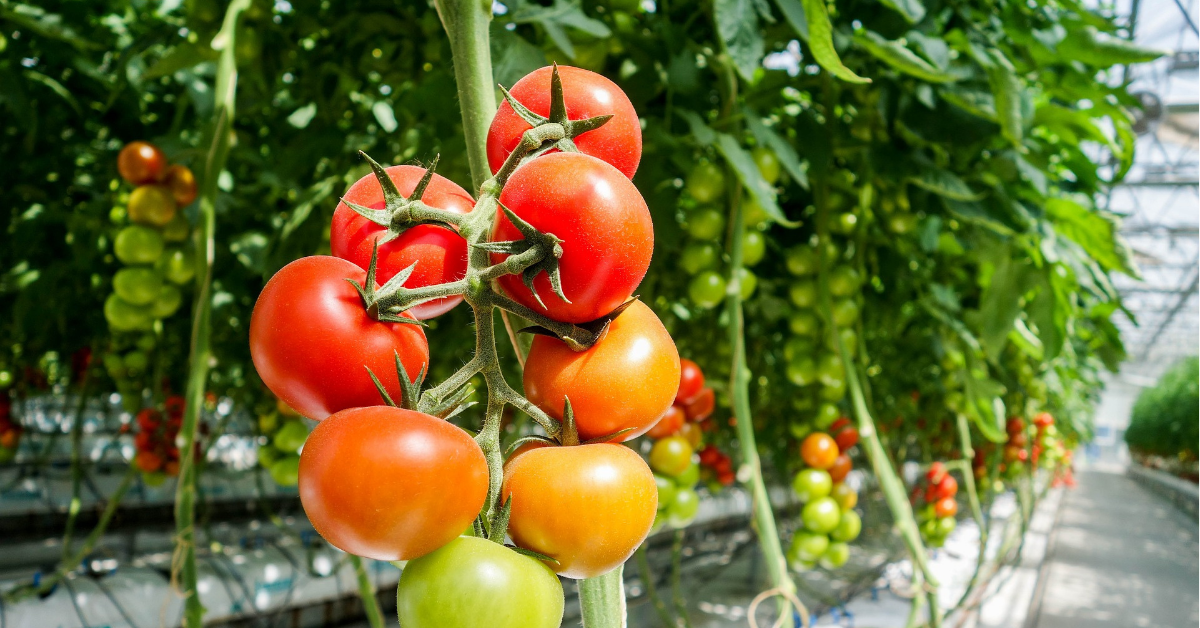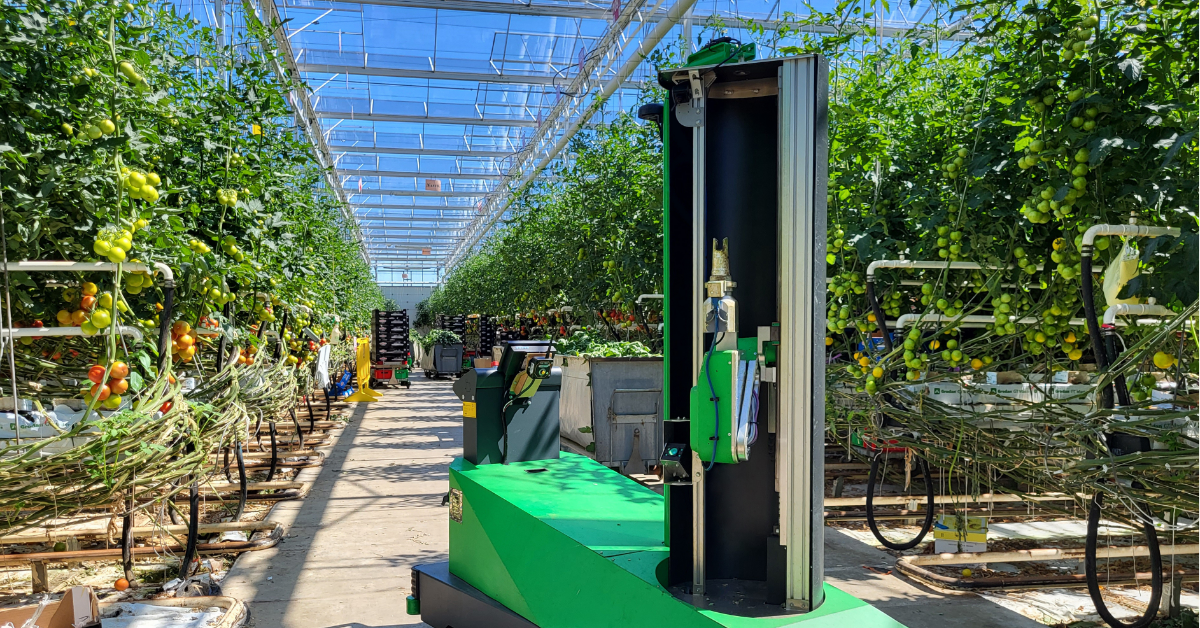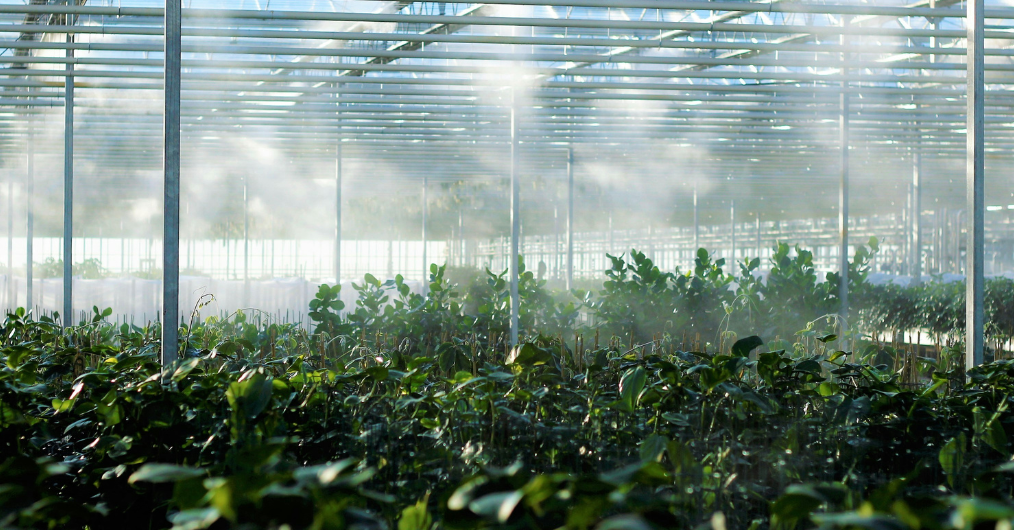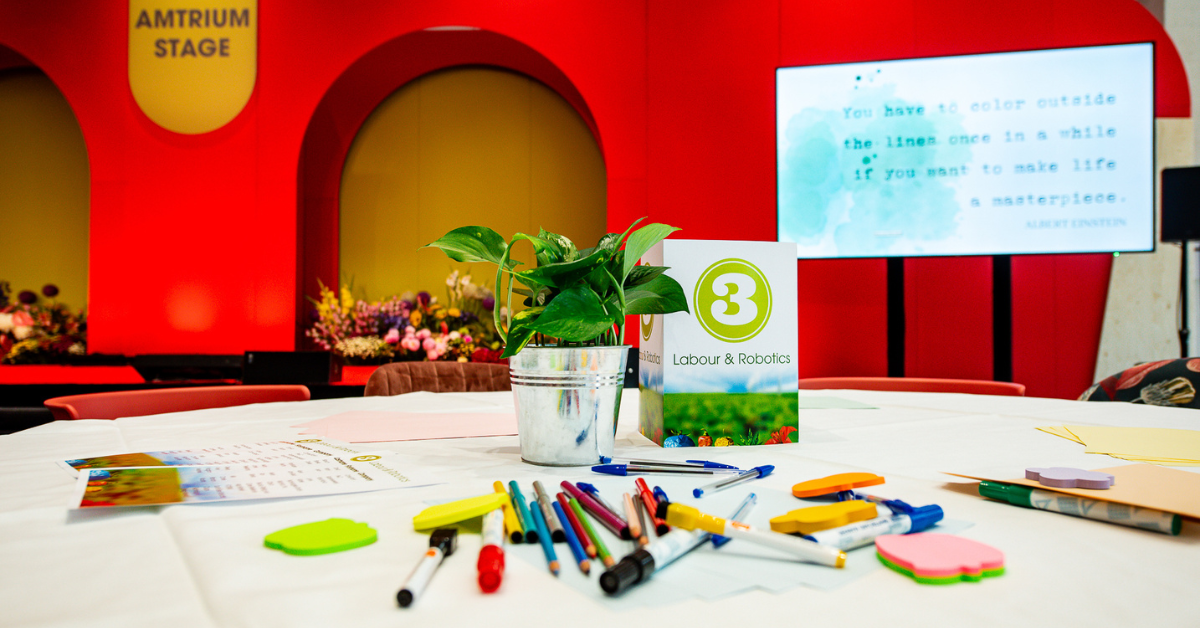How to get even better results with your LED lighting?
Author: Jacco Strating
Tuesday, 25 March 2025
'Passion' embodies our unlimited commitment to crops, people, and technology, driving innovation across the horticulture sector. Building on the enduring importance of personal touch, GreenTech is excited to strengthen connections and unveil new initiatives designed to inspire growth and collaboration within the industry. In a series of articles, the passion within horticulture worldwide will be highlighted from different angles. In this article, we focus on how collecting data inside the greenhouse with advanced sensors can contribute to better use of LED lighting and thus to better yields and quality.
Due to rising energy prices and the ambition of many companies to become more sustainable, more and more growers are switching to LED lighting. Although LED lamps require an investment, they also provide considerable energy savings. However, purchasing and installing LED alone is not enough to achieve maximum results, says Maarten van Bemmel of Ledgnd. The company started five years ago as an independent lighting consultant but has grown in recent years into a software company that assists growers with the integration and management of new technologies. With in-depth expertise in data integration, lighting technology, and crop cultivation, Ledgnd supports growers in optimizing their cultivation processes, improving efficiency, and enhancing harvest quality. Van Bemmel is the Product Owner of MyLedgnd, a software portal introduced to integrate and optimize the application of LED. “With MyLedgnd, the greenhouse data of users is made visible in a practical and simple way. This gives you a clear picture of the various climate factors and their influence on your crop. Based on the data that is collected and analyzed, growers can then optimize their growing strategies.”
According to Van Bemmel, providing this control advice is a logical consequence of the services that Ledgnd already offered. “We first helped companies to get LED in the greenhouse. But because LED has a different color spectrum and much less radiant heat than HPS lighting, it influences the microclimate in the greenhouse. Growers ask us how to deal with that. That is why we started developing software that makes it possible to gain insight into the differences between a greenhouse with and without LED. Providing control advice is the logical next step.”
As mentioned, advanced sensors are needed to obtain accurate data in the greenhouse. SAF Tehnika from Latvia has years of experience in developing such sensors for greenhouse horticulture. The company does this under the brand Aranet. The company was approached by Ledgnd to develop a sensor for measuring the light spectrum in the greenhouse. “Up till now growers have been adjusting their lighting according to PAR”, says Gints Antoms, Aranet global business development director. “PAR meters measure the daylight that is needed for plants and flowers. Within the light spectrum, there is only a certain range that can provide photosynthesis. This is 400 to 700 nanometers and within this spectrum the growth potential of the plant is measured. But if we approach it from the total amount of light that is required by the plant, you need to measure a wider spectrum.”
Van Bemmel is pleased with this development. “Without a spectrometer, a grower has to assume that the sun has a fixed spectrum that is the same all year round. But external factors influence this. Is the greenhouse chalked? Is it cloudy or sunny? What time of year is it or even what time of day? By having a clear image of the available light in the greenhouse, a grower can utilize their LED’s more efficiently, create the possibility to have a faster ROI on their LED’s and possibly extend their lifespan.”
According to Antoms, a sensor for measuring the light spectrum is not unique in itself. “But the sensor that has now been developed works completely wireless, is able to measure continuously instead of ad hoc and can send data to a climate computer. That makes the product unique and innovative. This sensor is also considerably cheaper to purchase, which makes it possible for more growers to apply it to their company. The sensor works on batteries with a lifespan of many years and can therefore be hung at the top of the greenhouse for optimal measurement. You actually don't have to worry about it anymore.” SAF Tehnika will introduce the new sensor during GreenTech Amsterdam in June of this year. “We will demonstrate the product there, so that everyone can experience the added value.”
Due to rising energy prices and the ambition of many companies to become more sustainable, more and more growers are switching to LED lighting. Although LED lamps require an investment, they also provide considerable energy savings. However, purchasing and installing LED alone is not enough to achieve maximum results, says Maarten van Bemmel of Ledgnd. The company started five years ago as an independent lighting consultant but has grown in recent years into a software company that assists growers with the integration and management of new technologies. With in-depth expertise in data integration, lighting technology, and crop cultivation, Ledgnd supports growers in optimizing their cultivation processes, improving efficiency, and enhancing harvest quality. Van Bemmel is the Product Owner of MyLedgnd, a software portal introduced to integrate and optimize the application of LED. “With MyLedgnd, the greenhouse data of users is made visible in a practical and simple way. This gives you a clear picture of the various climate factors and their influence on your crop. Based on the data that is collected and analyzed, growers can then optimize their growing strategies.”
Plant physiological aspect
Van Bemmel wants to emphasize that MyLedgnd does not control the climate computer but only provides advice. And because more and more data is becoming available, more and better advice can be given. “We can send data to the climate computer which can influence set points. If we see that the crop can handle more light, we tell that to the computer. Purely from a plant physiological aspect. We have no insight into the energy data and possibilities of a company, the climate computer makes those choices itself. But we can help make the right choices.”According to Van Bemmel, providing this control advice is a logical consequence of the services that Ledgnd already offered. “We first helped companies to get LED in the greenhouse. But because LED has a different color spectrum and much less radiant heat than HPS lighting, it influences the microclimate in the greenhouse. Growers ask us how to deal with that. That is why we started developing software that makes it possible to gain insight into the differences between a greenhouse with and without LED. Providing control advice is the logical next step.”
Trust the data
To gain that insight, data is needed. And to collect data, sensors are needed. “We have done a lot of tests with growers by performing different types of measurements and have talked to growers about whether they trust the data enough to use it for control advice.” And that is the case. ” We have discussed that with suppliers of climate computers and we have explained to them what the added value is of this advice. The climate computer is a complex system. Everything in the greenhouse is controlled by that computer and everything influences each other. So, if you want to implement extra advice, you have to make sure that it fits within the ecosystem as set up by the supplier. You want to disrupt the process of the climate computer as little as possible but still provide as much added value as possible. That is why we do not directly want to determine whether the lights go on or off or give more or less light, but we only want to indicate what the needs of the plant are. The climate computer can then make a choice based on that advice in combination with other factors.”As mentioned, advanced sensors are needed to obtain accurate data in the greenhouse. SAF Tehnika from Latvia has years of experience in developing such sensors for greenhouse horticulture. The company does this under the brand Aranet. The company was approached by Ledgnd to develop a sensor for measuring the light spectrum in the greenhouse. “Up till now growers have been adjusting their lighting according to PAR”, says Gints Antoms, Aranet global business development director. “PAR meters measure the daylight that is needed for plants and flowers. Within the light spectrum, there is only a certain range that can provide photosynthesis. This is 400 to 700 nanometers and within this spectrum the growth potential of the plant is measured. But if we approach it from the total amount of light that is required by the plant, you need to measure a wider spectrum.”
Better light mix
The company is therefore working on a spectrometer that provides indications for different parts of PAR, but also for different parts outside PAR. “The spectrometer not only has a wider spectrum than PAR but also provides detailed spectral breakdown. We do it because LED lights are capable to adjust the colors. This capability presents an opportunity to vary the intensity of each color scheme. There are indications that plants develop more positively when they are given a particular mix of light spectrum. If you get a better mix, the plant will grow better and it will have a higher yield and quality. With the spectrometer we can tell how much of each color the plant is receiving and then we can transmit this information to the climate computer, so the intensity of each color can be adjusted. This means a grower can actually dynamically steer their LEDs on a desired spectral distribution or ratios.”Van Bemmel is pleased with this development. “Without a spectrometer, a grower has to assume that the sun has a fixed spectrum that is the same all year round. But external factors influence this. Is the greenhouse chalked? Is it cloudy or sunny? What time of year is it or even what time of day? By having a clear image of the available light in the greenhouse, a grower can utilize their LED’s more efficiently, create the possibility to have a faster ROI on their LED’s and possibly extend their lifespan.”
Extend lifespan
Improved crop productivity is not the only advantage that a grower gains from this information. You can also dim the light in the greenhouse more specifically during the day and thus save energy, says Antoms. “And you can extend the lifespan of the LED lamps. Certain colors do not last as long as others. So, by consciously controlling this, the lamps do not have to be replaced as often.”According to Antoms, a sensor for measuring the light spectrum is not unique in itself. “But the sensor that has now been developed works completely wireless, is able to measure continuously instead of ad hoc and can send data to a climate computer. That makes the product unique and innovative. This sensor is also considerably cheaper to purchase, which makes it possible for more growers to apply it to their company. The sensor works on batteries with a lifespan of many years and can therefore be hung at the top of the greenhouse for optimal measurement. You actually don't have to worry about it anymore.” SAF Tehnika will introduce the new sensor during GreenTech Amsterdam in June of this year. “We will demonstrate the product there, so that everyone can experience the added value.”
Good partnerships
Just as good sensors are essential for Ledgnd, data platforms like MyLedgnd are essential for SAF Tehnika. "We only make hardware, but hardware alone is not enough. It is important to collect accurate data, but then that information also needs to be interpreted in order to make a difference. That is why it is important that companies work closely together to optimally support the grower," says Antoms. Van Bemmel agrees. "By starting good partnerships, we can jointly help growers with tools that they can really use."
Have exclusive horticulture technology news delivered to your inbox
The GreenTech monthly newsletter brings you the latest exclusive horticulture technology news and updates about our global horticulture technology trade shows and events.
Join over 32,000 of your peers and receive:
☑ Exclusive commentary from industry leaders
☑ The latest news from the GreenTech team
☑ Stay up to date with all the latest news about our events





